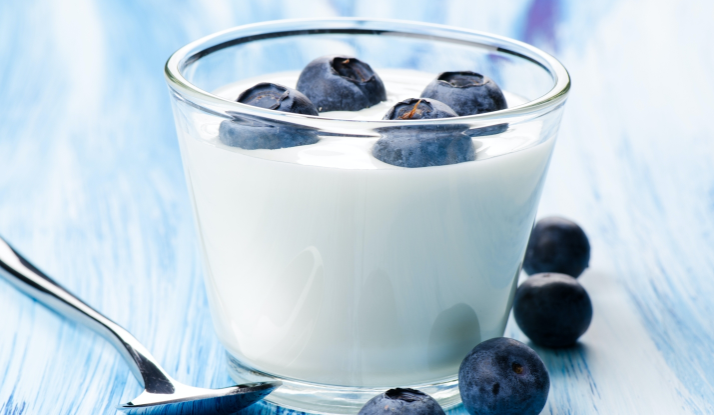Though you might think of skyr as yogurt, it is more accurately described as a soft cheese because it is made with rennet, a complex of enzymes that coagulates liquid milk and causes it to separate into curds and whey. Skyr is traditionally made from skimmed milk, milk from which the cream has been separated for butter making. But don’t confuse traditional skimmed milk for the pallid blue skim milk sold in stores; the store-bought version contains a wide variety of additives and synthetic vitamins.
Skyr is pleasantly sour and remarkably thick. I often mix it with honey and fresh fruit for breakfast or a light dessert.
MAKES ABOUT 2 CUPS
INGREDIENTS
- 8 cups milk (not ultrapasteurized)
- ¼ cup skyr
- 2 tablespoons water
- 3 drops liquid rennet
INSTRUCTIONS
- Warm the milk in a heavy stockpot over medium-low heat until it reaches 110°F.
- Whisk in the skyr until it fully dissolves into the warm milk.
- Pour the water into a little bowl, stir in the liquid rennet, then stir the mixture into the milk with deliberate up and down strokes.
- Cover the pot and let it sit in a warm place, such as a sink filled with warm water (about 104°F), for 12 hours or until the milk solids coagulate, separating from the yellowish whey. As the water in the sink cools, drain it and replace it with warm water to maintain a consistent temperature.
- With a long-bladed knife, cut the curds by making firm slices the length of the pot, about 1 inch apart, then turn the pot 90 degrees and make similar slices across the curds to achieve a cross-hatched effect.
- Line a fine-mesh sieve with a double layer of cheesecloth and set it over a large bowl. Spoon the curds into the sieve, cover with a bit of cheesecloth, and allow the curds to drain at room temperature for 6 to 8 hours, until they thicken to the consistency of Greek-style yogurt.
- Transfer the curds to a bowl and beat them by hand with a wooden spoon until smooth.
- Spoon the skyr into a jar, cover, and transfer to the refrigerator, where it will keep for 6 to 8 weeks.





